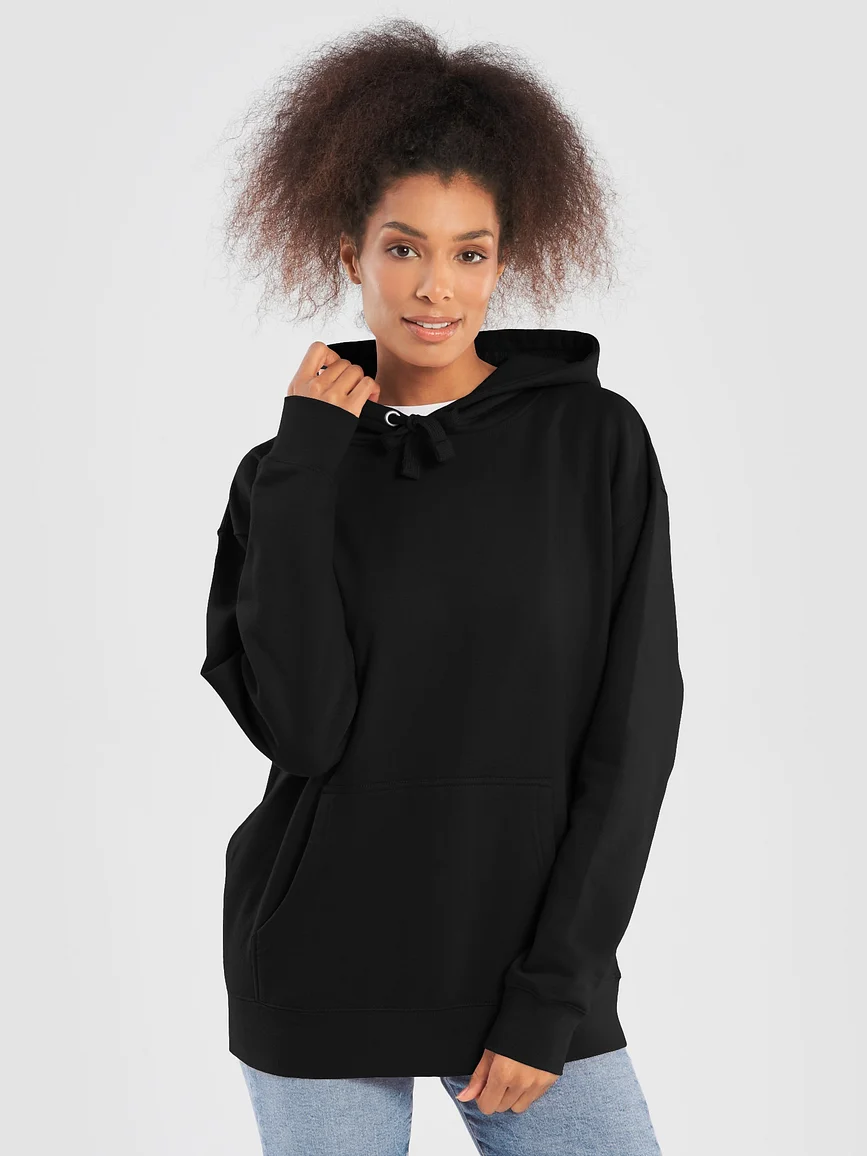How to Make Money Streaming: The Ultimate Guide
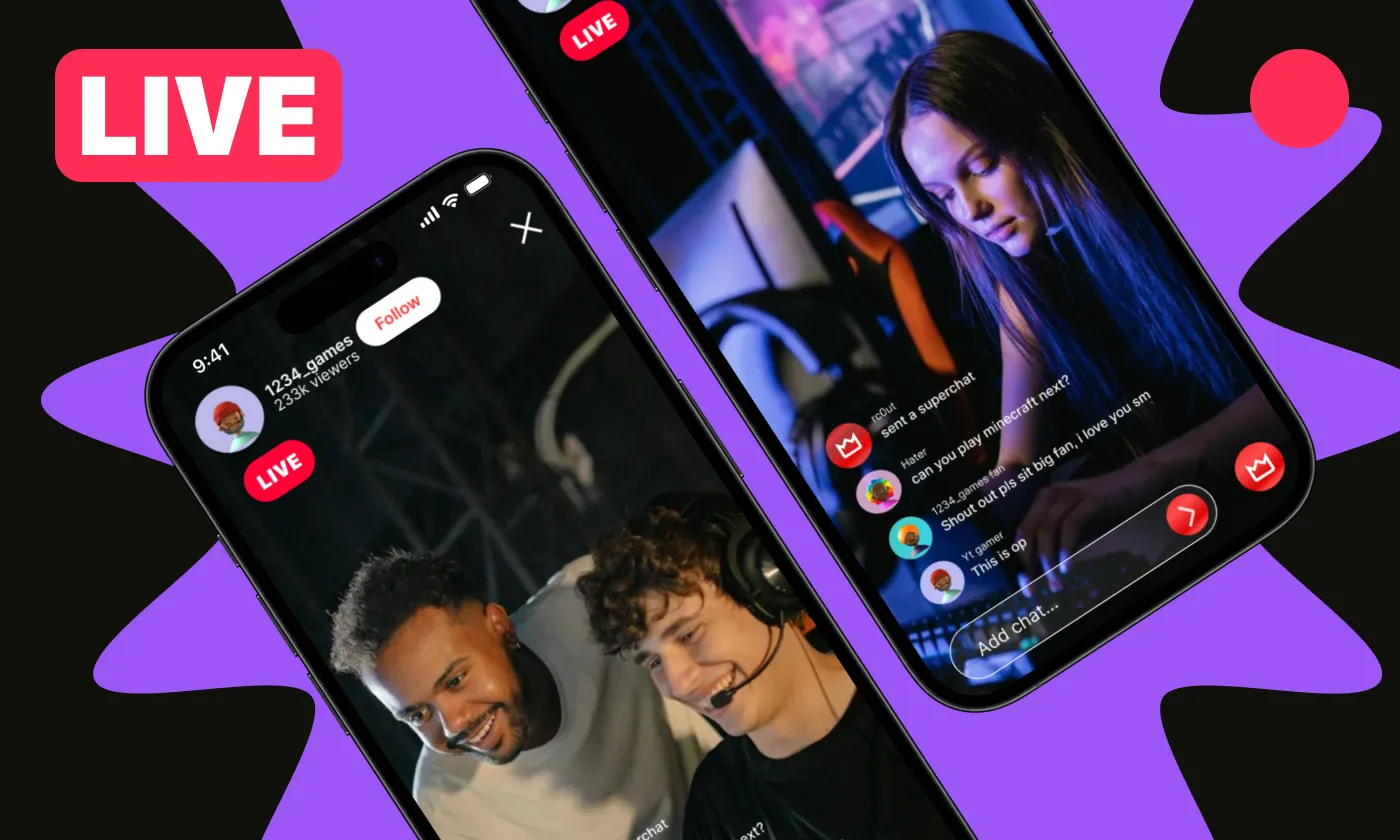
Live streaming is everywhere these days, with the streaming industry growing like crazy via major streaming sites like Twitch, YouTube, and Facebook Gaming; you can even live stream to a lesser level on platforms like TikTok, Instagram, Fourthwall, and Patreon. Live streaming of videogaming alone is expected to hit a value of nearly $18 billion by 2027 (via Statista) - and that's only one content niche of this rapidly growing pursuit. So what better time to jump into the world of live streaming, so you can make money doing stuff you love to do?
We've got all the basics plus some pro tips to get you started as a streamer, including how to select the right streaming platform, how to set up your stream, how to monetize your stream to maximize your earnings using revenue methods like affiliate programs, subscriptions, sponsorships, and how to connect your main live streaming platform to your Fourthwall website to build your fan community! You create great content, and we'll help you get those income streams happening, so you can earn money and take your streaming career to the next level.
What Exactly is Live Streaming?
Live streaming is broadcasting live video content via the internet through popular live streaming platforms like Twitch, YouTube, or one of many other small options. You can also live stream through social networks, crowdfunding sites, and anywhere else live streaming options are available!
Live streaming can take many forms, and basically defines the meaning of the phrase "the sky's the limit" - you can stream videogaming, live music performances, dance, cooking, IRL (in real life) travels, Q&A session, beauty or fashion sessions, or lifestyle vlogs. Anything you can think of to do, it's likely that you can also live stream it!
But being a successful streamer is another level of live streaming, that goes well beyond just snagging your phone and hitting the "Go Live" button. Live streaming for revenue or as a career pursuit requires engaging content creation, planning, reliability, good audience interactions, and a plan for how you're going to monetize it all (which most often ends up being a combination of many separate revenue sources and opportunities.)
Why Streaming is a Great Money Making Opportunity
With millions of viewers tuning in daily, live streaming platforms like Twitch, YouTube, and Facebook Gaming are offering incredible opportunities for streamers to monetize their content! More viewers mean more potential for you to earn money with your live streaming through ads, subscriptions, and direct tipping from your fans.
With all of these active users, live streamers can tap into audiences of all sizes, which gives both new and established streamers opportunities to make money. In addition to ads, subs, and tips, streamers can also make money from affiliate marketing, sponsorships, and even merchandise sales on streamer-friendly ecommerce sites like Fourthwall, which offer streamers a multitude of ways to monetize beyond the "traditional" methods.
With Fourthwall, you can create your own website and customized merchandise store, sell branded products, set up membership programs to offer exclusive content to your fans, and connect your store to streaming platform shopping opportunities, like YouTube Shopping, TikTok Shop, and Fourthwall's own Twitch Gifting feature.
How Much Do Streamers Get Paid?
A streamer’s earnings can vary greatly depending on their audience size, content, how much they stream, and how engaged/supportive their audience is. Platforms like Twitch and YouTube offer monthly subscriptions where viewers can support their favorite streamers in exchange for exclusive bonuses (like emoji/emotes, badges, and access to exclusive videos); this is perhaps the biggest way streamers can monetize their channel.
Many viewers are also happy to directly tip (donate to) the streamers of their choice, so setting up donation links to services like PayPal and Streamlabs can help you access that source of revenue. Once available to the streamer, ads from the streaming platforms can also contribute to streamer revenue, as a percentage of the ad revenue (when the streamer is qualified) goes to the streamer; this can add up quickly once you build a larger audience.
All of these potential revenue streams depend in large part on you - the content you create, the quality of that content, your consistency and reliability as a streamer, and your audience engagement. These (and a little luck) are the things that determine how much a streamer can earn; keep in mind the more diverse your income streams, the more you max your monetization potential.
Here’s a rough breakdown of what your potential income could be on live streaming platforms like Twitch and YouTube (estimations collated from a variety of sources, including individual Twitch channels, StreamsCharts, and the Twitch Earnings Leaderboard):
Beginning Streamers
Those just starting out might earn $25-50 per month ($50 is, for example, Twitch's minimum payout level), primarily from affiliate deals (promo codes and small commissions) and tips.
Small Streamers
Those streaming regularly each week might earn around $100–$500 per month, from tips/donations, affiliate deals, and ad revenue. Entry level programs like Twitch's affiliate program can help you progress more quickly.
Mid Tier Streamers
With a slightly bigger following and Twitch or YouTube partnership, mid level streamers can earn substantially more - between $500 and $5,000 per month, incorporating additional revenue streams like subscriptions, merch, and sponsorships, and also having a bigger fan base to support with tips and goals.
Top Tier Streamers
"Celebrity" streamers with large, highly engaged audiences, especially on Twitch and YouTube, can make anywhere from $10,000 to over $100,000 monthly through a combination of ad revenue, fan support, merchandise sales, subscriptions, donations, brand deals, personal appearances, and large sponsorships.
The Top Four Streaming Platforms for Monetization
Choosing the right streaming platform for you could be the key to your streaming success! When selecting a streaming platform, consider your target audience, content style, and the monetization tools that best align with your streaming goals. Let's check out each of the four major players and what they have to offer:
Twitch - est. 2011

Twitch is known for its large, dedicated audiences and community building, but is also highly competitive with around 7.5 active live streamers as of 2024 (stat via Statista); that said, it's basically the gold standard of live streaming, and is also expanding into more live streaming categories including live music, DJs, chatting/podcasts, creative activities (art, crafting, coding), IRL (in real life) and travel streaming, and of course eSports.
Ideal for gamers and live content creators, Twitch offers a robust set of chat and monetization tools, including their own ecosystem of emoji (called "emotes"), tiered subscriptions and gift subscriptions, ad share revenue, general tipping, gifting, Bounty Board sponsorship opportunities, and Bits (Twitch's virtual currency used for tipping at 1 Bit = 1 cent, also represented by emotes in chat.)

The Twitch Affiliate program is a great starting point for streamers looking to monetize their channels, and can be upscaled from the Twitch affiliate program into Twitch Partner with even more benefits to the streamer once certain requirements are met.
YouTube - platform est. 2005, YouTube Live streaming est. 2011
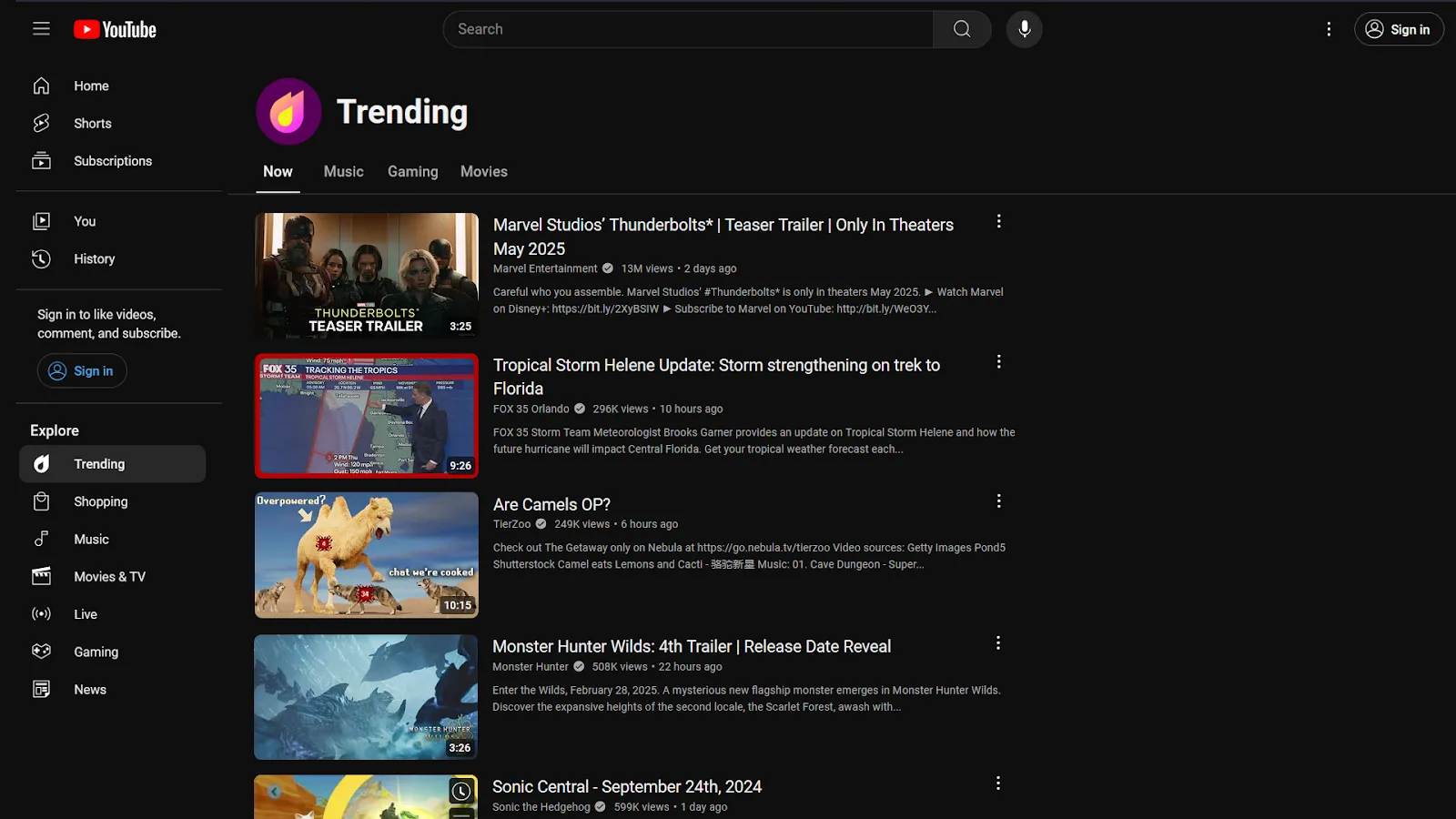
YouTube is another behemoth of a platform, primarily known for the sharing of pre-produced (uploaded) videos, which are watched at a rate of over one billion hours of videos every day (source: Wikipedia.) Video categories on YouTube are vast and range from comedy and music videos to movie trailers, vlogs, beauty videos, short films and more; most content is generated by individuals, but established entertainment and news sources have also expanded their output to YouTube.
Live streaming only arrived on YouTube starting in 2011, and offers a slightly less rich live streaming experience than Twitch, but they appear to be regularly adding features to their live streaming format and structure.
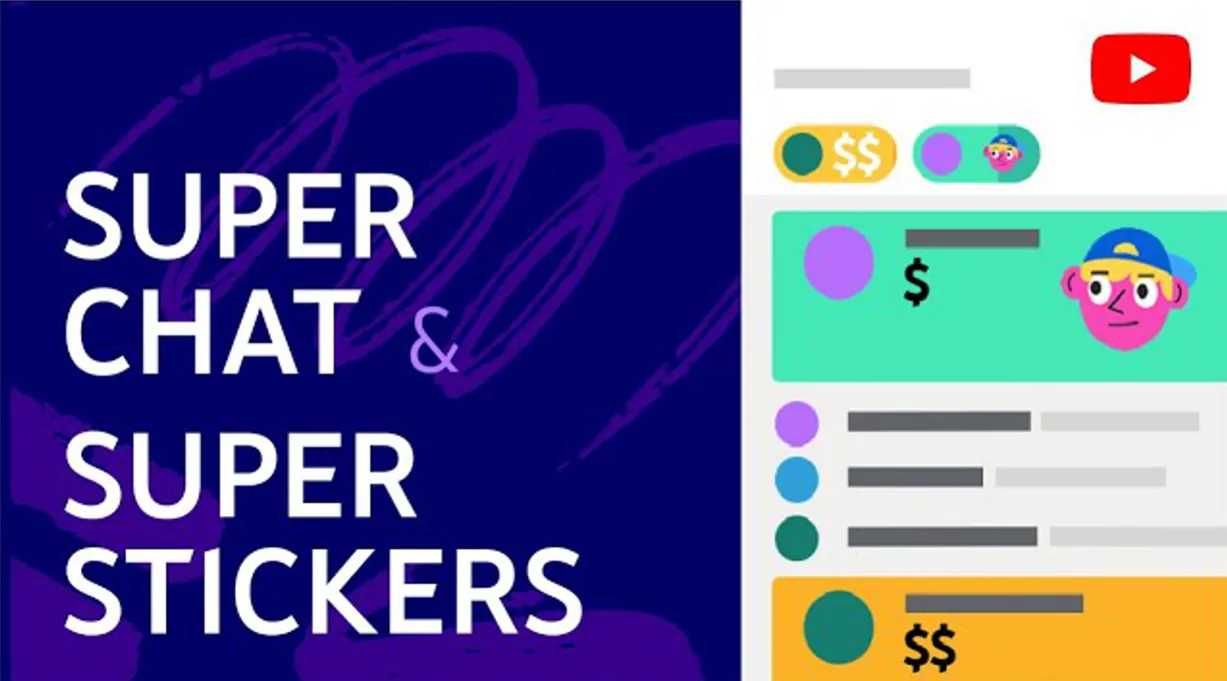
These include monetization options like ads (once a channel reaches specific qualifications), channel memberships, Super Chats and Super Stickers (paid messages that are highlighted during live chats), and merchandise shelf integrations via YouTube Shopping.
YouTube is known for great looking video and trending videos, so basically any category you would create a video for should also work well for live streaming on YouTube.
Facebook Gaming / Facebook Live - est. 2016 / 2018
Facebook Gaming and Facebook Live: Meta for Media, somewhat confusingly, are Facebook’s two live streaming platforms. They’re quite a bit more limited than Twitch or YouTube, in that they’re basically for streamers with an existing Facebook audience. They’re less saturated than Twitch and YouTube, potentially making it easier to stand out, but it can also much more difficult to get noticed, as the platforms haven’t really caught on in a big way as a main source of live streamers, although they've certainly tried.
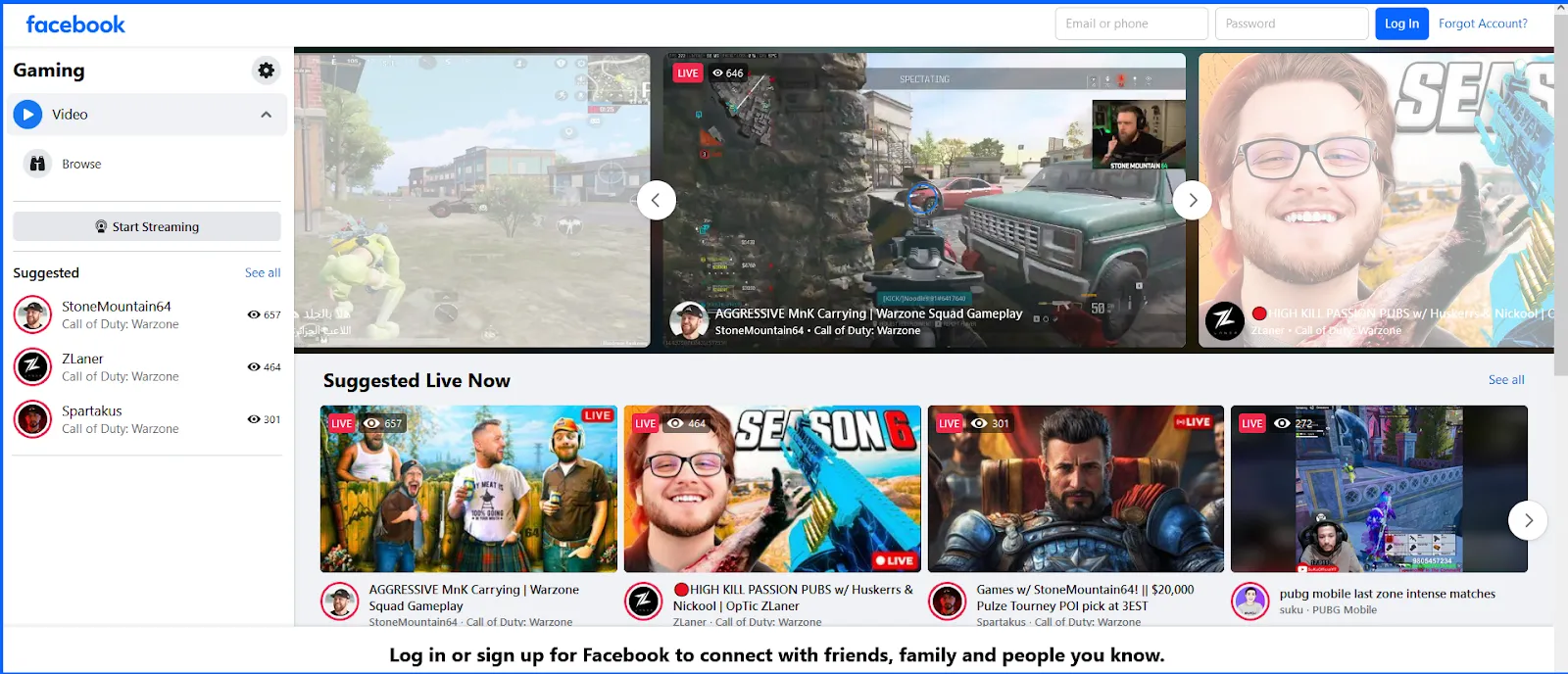
Facebook Live does offer some live streaming features like featured links, live pools, and Live in Stories (to directly share your live broadcasts to your Facebook Stories), as well as live comment moderation and fan tools like Badges and Front Row (to highlight your top fans.) Those fans can also use "Stars" (Facebook's currency - one star equals 1 cent) and purchase Fan Subscriptions (once a Facebook page meets subscription eligibility criteria.)
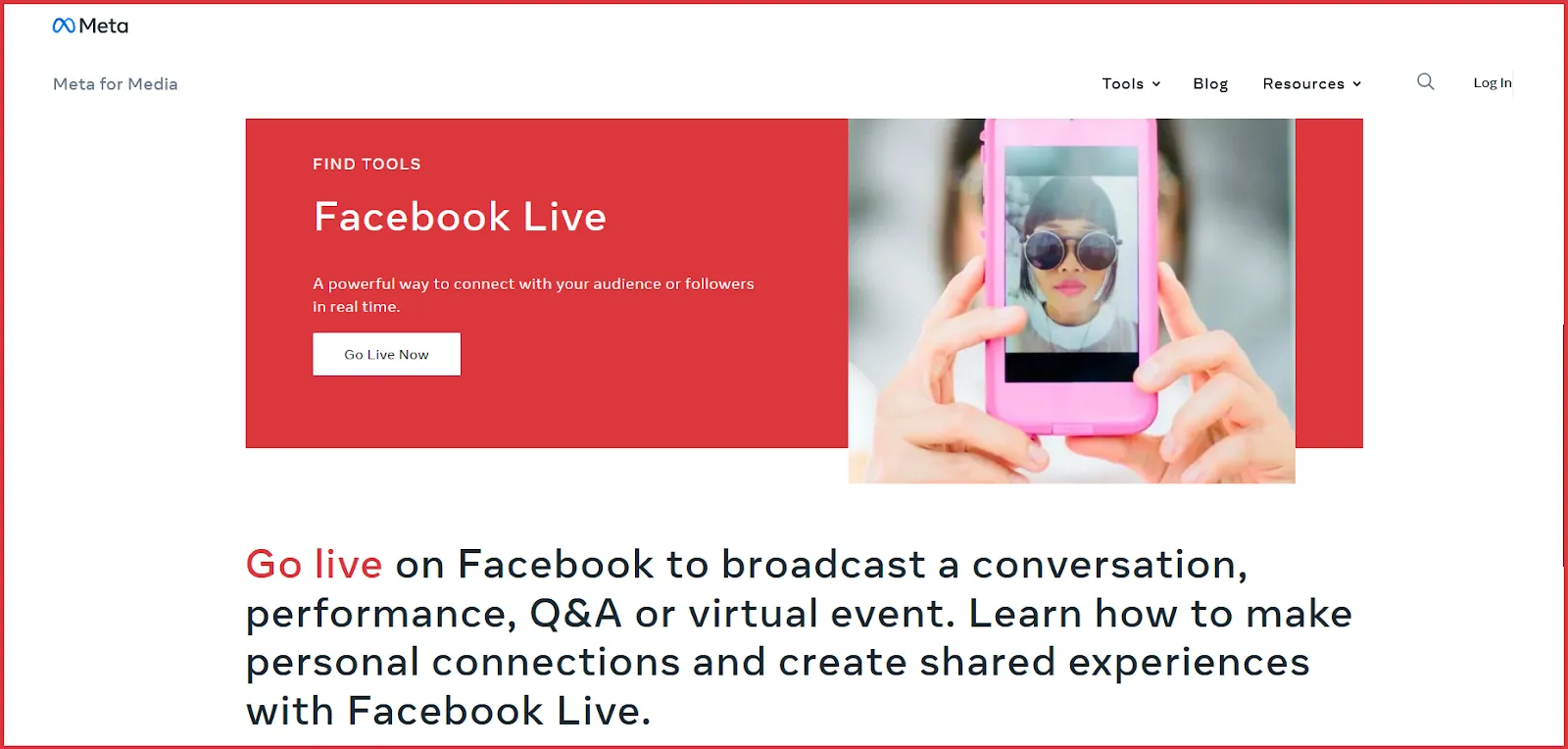
Kick - est. 2022
Kick is the newest live streaming platform on the scene, and also the most controversial to date. Founded as a competitor to Twitch with featured categories like gaming, motorsports, chatting, and gambling, Kick offers higher revenue shares to its streamers, but also has more lax content policies (although they have recently upgraded their chat settings with AI moderation.) This has led to some questionable live streaming behaviors and incidents that has discouraged some streamers from the platform.
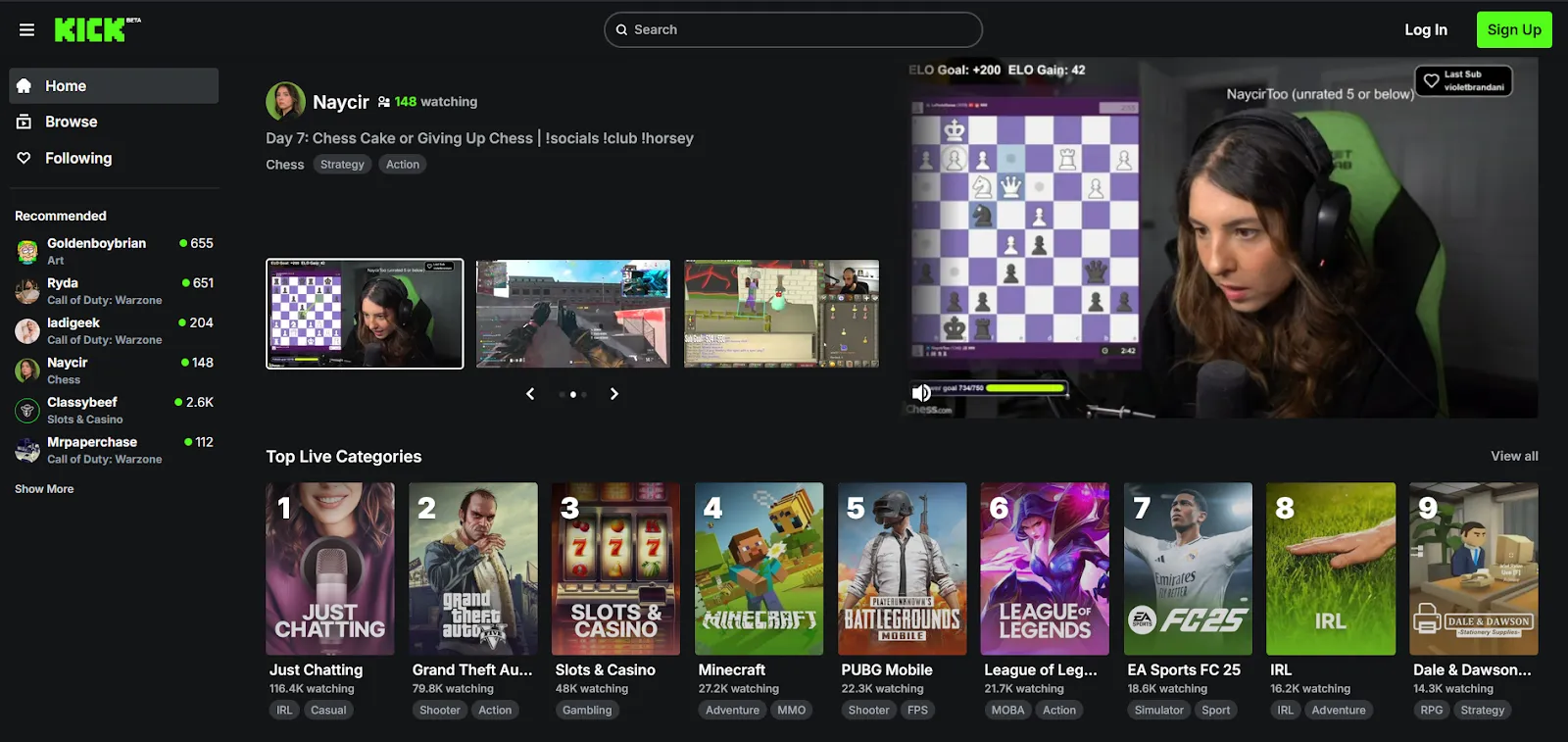
That said, if your content leans toward the edgier side, Kick might be the platform for you. Kick’s revenue opportunities for streamers to make money include Kick basic subscriptions and gift subscriptions, as well as the KCIP (Kick Creator Incentive Program) that can make you part of the "Kick Elite" if you meet the program's requirements, which start at an average of 1500 Kick followers and 100 viewers per stream over 30 days. Viewers also get badges, and can drop tips in chat.
What You Need to Get Started Live Streaming
The Basics
To get started, you'll need to at the very least invest in a decent camera, microphone, and some basic lighting to make your stream look professional. Platforms like Twitch and YouTube are well known for their clear visuals and audio, so quality matters! But you don't have to break the bank initially - you can get started with your laptop camera or even your smartphone, as most platforms do support mobile live streaming.
Once you've decided that live streaming is something you want to continue pursuing, then you can put together a beginner's setup with a basic webcam (1080p resolution is recommended); a single microphone (this can be a lavalier mic - the kind that clips onto your shirt - or a desktop USB mic like a Blue Yeti); and some inexpensive lighting, like a basic softbox. More complex add-ons for later might include headphones if you'd like to game with guests; a green screen for doing effects or eliminating your background (for instance, if you'd like to isolate the image of you on top of a game you're playing); and a production switcher like an Elgato Stream Deck.
The Software

OBS (Open Broadcaster Software) is one of the most-used streaming software applications; you can customize it to your liking to make your stream look exactly as you want!
Streaming software like OBS Studio or XSplit offer a host of broadcast features that open the door to more professional-level streaming. These programs live on your desktop, and allow you to customize your stream with overlays, alerts, transitions, special effects, and other elements that attract more viewers. You can also store different scenes (think of these as digital "sets") so that you can have them ready for streaming different scenarios, for instance a gaming stream, a talk show, a podcast, and an art stream.
Stable Internet Connection
A reliable, high-speed internet connection is of major importance for uninterrupted live streaming. Most platforms will officially recommend a minimum upload speed of 3 Mbps, but as the live streaming scene is accelerating quickly, so are the speeds needed to support a smooth broadcast - a more optimum upload speed would be between 5-10 Mbps, especially if you live in a high internet traffic area.
Schedule
Speaking of reliable, this applies to you, too, as the streamer. As you build your fan base, you'll find that people look forward to your streams, so having a fairly set schedule will help them know when they can watch you, and in turn you'll become part of their entertainment routine, which can encourage them to become subscribers. Streaming at times that suit your target audience will also help; for instance, if your main audience is in the U.S., then evening hours and weekends (U.S. time) should work best.
A Plan!
Now that you've got the gear, it's important to approach streaming with a plan. This doesn't have to be set in concrete, but if you're pursuing live streaming on a more professional level, there are some specific things that will help you build your audience. Deciding on what you're going to stream is the first factor; there are variety streamers that change up their content often, but the bulk of successful streamers choose a main (game or activity), and only occasionally take a break with other types of content. Choosing a primarily game/activity can also help you down the road, as your streams grow and you want to pursue sponsorships.
And next, decide how you're going to interact with your viewers. Do you enjoy being yourself, chatting about the game, and maybe opening up chat to a variety of topics - or would you prefer streaming as a character, where you can build a fun persona for your fandom? Make either choice visually appealing by adding overlays, branding elements, and alerts (visuals that pop up on screen when people follow your channel or support you) to increase viewer interaction. Again, the possibilities are limitless, but setting goals and giving your streams some direction will help you grow!
Ways to Monetize Your Stream
Each platform generally has its own version of these monetization opportunities, so your mileage may vary based on what's required to unlock the availability of some of these programs. From subscriptions to ads, donations to sponsors, these are, overall, what most live streaming platforms have available for streamers to make money:
Subscriptions
One of the main ways to earn recurring income is through platform subscriptions. Most platforms have some baked-in benefits for said subscriptions (less or no ads, special badges and emotes/emoji), but you can also offer exclusive content like members-only streams, special downloads, Discord roles, or behind the scenes access to add value to the main subscriptions. This strategy works exceptionally well when you are a Twitch Affiliate or Partner, or YouTube Partner.
Ad Revenue
While ads are a given on most live streaming platforms (unless you're paying to live stream), some platforms allow you to choose when the ads are integrated into your stream using pre-roll, mid-roll, and banner placements. If you have this option available to you, try to balance ad frequency to avoid disrupting viewer experience while maximizing your income. Twitch also has an ads program where you can increase your share of ad revenue by hitting certain subscription goals, which is another good revenue boost to strive for.
Tips / Donations
Many of your fans will enjoy your content, and much like a live performer IRL (in real life), they'll want to tip you! You can easily set up donation options via services like PayPal or Streamlabs; you can also utilize Streamlabs or StreamElements to trigger special alerts on screen when you get tips, to visually reward your viewers for their support. You can also set up donation goals during streams to engage viewers even more, and create calls to action for support.
Memberships
Creating membership programs offering perks such as exclusive content, early access to streams, or special discounts is a great way to make money via streaming. Successful streamers often think up even more creative ways to reward their biggest fans, providing extras like behind the scenes peeks, early releases of special videos, music, or digital downloads, mailed prizes, or online/IRL meetups. Fourthwall makes it easy to set up memberships with exclusive rewards for your fans, as do other creator support sites like Patreon and Ko-Fi.
Merchandise Sales
Set up an online store to sell custom branded merchandise like T-shirts, mugs, and stickers; you can design these with your image, stream logo, or even memes and in-jokes from your streaming community. With ecommerce sites like Fourthwall, you can integrate your merch store into your streams, allowing viewers to purchase products easily; Fourthwall syncs up with YouTube Shopping and TikTok Shopf, and even lets you set up Twitch Gifting, so viewers in your Twitch chat can gift your merch to other viewers!
Sponsorships and Brand Deals
Once you've made some progress with your live streaming channel(s), it's time to reach out for potential sponsorships! Create a media kit and/or pitch deck showcasing your channel's stats and audience demographics, to showcase the kind of content you create, how engaged your audience and fans are, and what you can bring to the table for potential sponsors. Then, once you snag those deals, integrate brand promotions and ads authentically into your streams to maintain credibility as you're bringing in that extra revenue.
Affiliate Marketing
Affiliate programs are especially great for smaller streamers, as you can promote products live on stream and make money by earning a commission on each sale. When doing this, be sure to choose products that are relevant to your audience, and include affiliate links in your stream descriptions and panels, as the more you get your audience to participate/buy, the more you'll earn.
Create Engaging Content That Turns Viewers into Fans!
Your content is what will attract viewers and turn them into paying subscribers and supporters! Here are some ideas to get you started:
Engage with Chat
Real time interaction during your streams is so important! While you don't want to call out those who are just "lurking" (watching your stream, but not necessarily participating yet), try to greet new viewers as say hello in chat, respond to chat comments, start chat conversations, and create a welcoming environment to build yourself a loyal, friendly community of fans and subscribers.
Solidify Your Branding
Develop a personal brand and storytelling style that really showcases who you are on your streams, whether you're streaming as yourself or as a content creation character. Having a consistent, identifiable brand in which you're sharing and communicating with your viewers will help develop genuine fan connections, which will also inspire them to support you through donations, subscriptions, and purchases so they can help you create more content!
Set Up a Discord Server
A dedicated Discord server is such a great space for your community to hang out and interact outside of your streaming times! With a Discord server, you can set up chat rooms for your community, plus discussion channels, announcement pings (so people know when you're streaming), and even stage and gaming channels, so there's always something fun to do. Discord can also offer additional revenue through memberships, so build your Discord into a place your fans will want to be!
Collaborate with Other Streamers
Collaborating with other streamers and fellow content creators can really expand your reach and expose you and your collaborator(s) to new viewers! Try co-streaming with a friend; gather a group of streamers for a joint event or to team up in a game; host or guest on a podcast; meet up to do an IRL stream; there are so many possibilities for you to both make money!
Streaming and Gameplay Highlights
Your streams are content all on their own, of course; but you can also host special streams to showcase your gaming strategies, challenge community members to matches, host an AMA, or screen reels of funny or memorable streaming moments to keep viewers entertained. The latter are especially effective if you include them as part of a milestone celebration on-stream, for instance your "streamiversary" (the date you started streaming), or hitting a particular community or gaming goal.
Diversify!
While you'll likely end up creating the majority of your live streaming content on one platform, diversifying to other platforms can really be to your benefit. For instance, if your main is Twitch, you can take clips and highlights from your Twitch streams to create videos for YouTube and short videos for TikTok; doing this will help you attract new viewers, and can also create extra revenue streams.
Let Fourthwall Help You Boost Your Streaming Income!
Fourthwall is ready to help you build your live streaming career, so you can earn money and grow your community of supporters! Fourthwall is an all-in-one ecommerce solution tailored for streamers, with so many features that are perfect for your goals of streaming and making money.
For starters, you can host your own customized website on Fourthwall, which includes your own merch store, where you can create branded merchandise like T-shirts, mugs, stickers, and more for your fans and subscribers without even having to store any product; Fourthwall prints and ships your print on demand merch for you! And you can integrate your store directly into your streams for seamless shopping and easy CTAs.
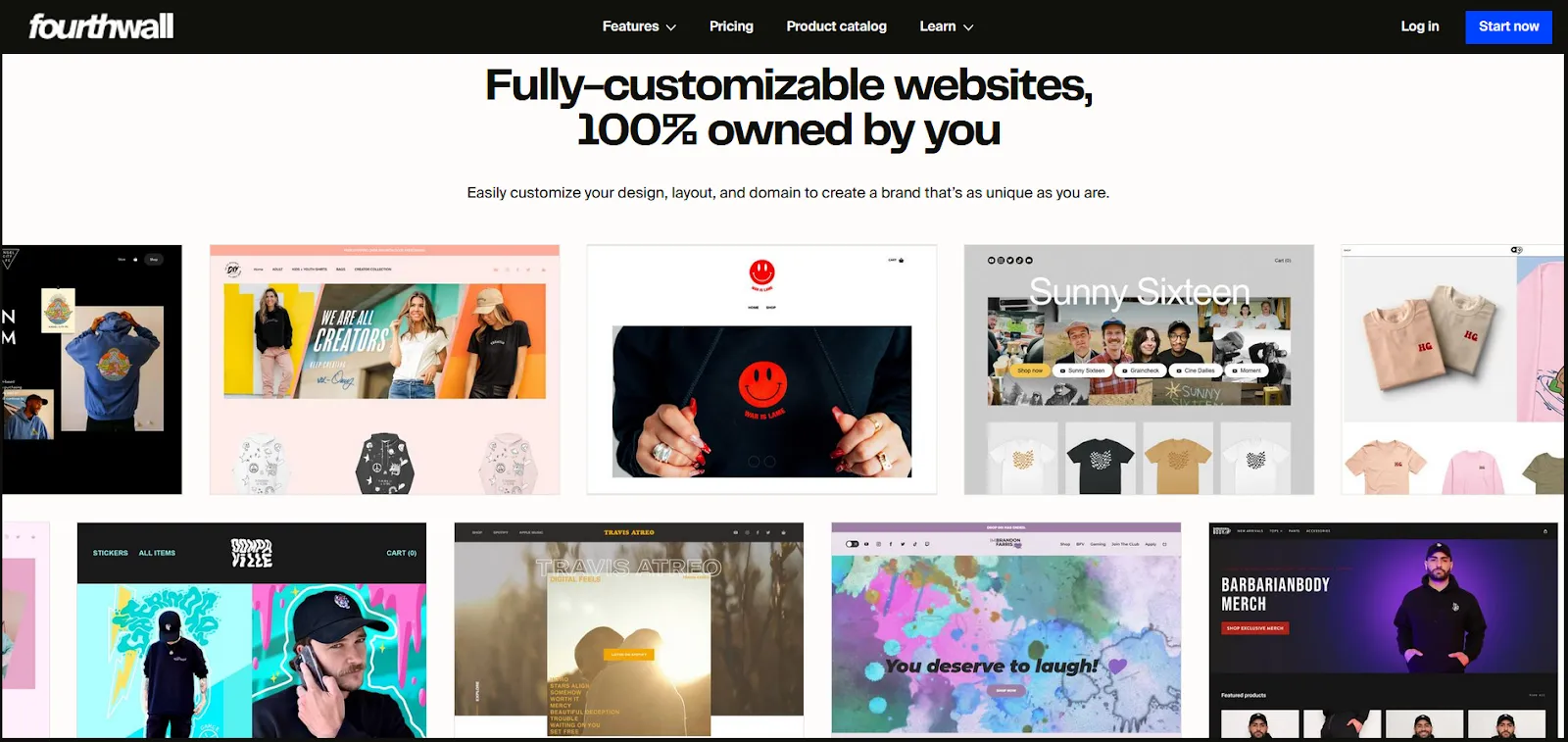
You can also set up membership programs for your audience offering exclusive perks and special access (more revenue!); send thank-you videos to your supporters; highlight your socials; accept tips; and even create your own mobile phone app!
Get streaming, let Fourthwall be your first collaborator, and start making money!






